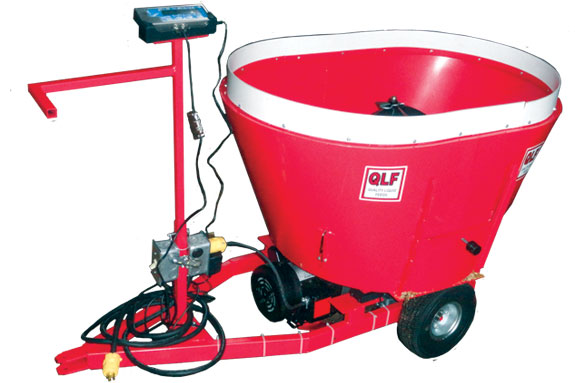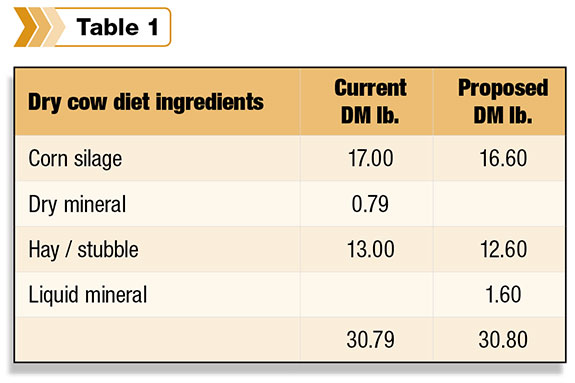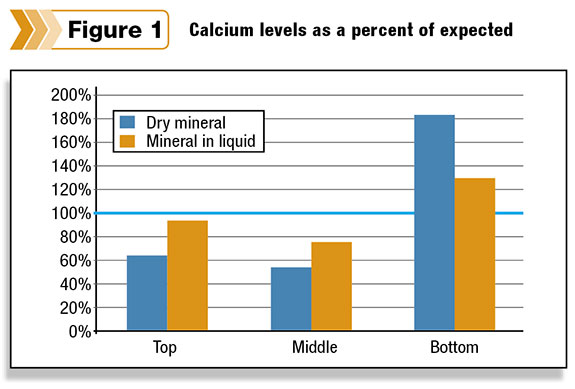“What are the cows telling you?” This is the first question consultants often ask after a major ration change. This might be the inclusion of a new commodity, changing forages, new high-moisture corn or the addition of a new additive.
Even though we have some of the best modeling software in the world, we still have nutritionists tweak rations based on cow performance (well, they may use a more sophisticated term than tweak).
While ration programs are a necessary and important starting point, the programs don’t account for physical differences in feedstuffs that will result in sorting due to various particle size, moisture or stickiness.
When we combine various carbohydrate sources, modeling programs predict an outcome. At times, the rumens on the farm tell a little different story.
For myself, one of the frustrations I have had is predicting what a TMR will look like if I changed one or two ingredients. What will the Penn State shaker box read if I add some straw and take out a little haylage?
How will a liquid (water, whey or molasses) change the physical properties of the TMR? We could, of course, just mix a new TMR on the farm and measure results.
This experimentation might require purchasing an unnecessary ingredient, watching cows go up or down in milk production, etc. Dairy producers understandably want predictable responses without experimentation.

But is there a better way?
This past year, we put together a mini-TMR mixer to help us measure and anticipate ration changes.
The mixer is a one-cow, scaled-down model of an actual single vertical-screw mixer.
With load cells, it will effectively weigh and mix most TMRs.
The mixer allows us to mix simulated TMRs to measure physical and nutritional changes to the TMR.
We’ve taken this process a step further. Multiple TMRs are mixed on the farm utilizing on-farm feedstuffs and other feeds the farm may have access to.
These multiple TMRs reflect multiple options to fine-tune the ration. Samples of these various TMRs are sent for analysis.
Multiple simulated TMRs can provide a road map to fine-tuning a dairy ration based on current feedstuffs and available off-farm feedstuffs. The power in this analysis is the ability to test multiple TMRs without experimenting on the cows. This approach is not intended to replace ration-balancing but rather supplement it.
Small amounts of a desired feedstuff can be included in these mini-TMRs – rather than having a semi delivered, we can experiment with a bucket. We can push the levels of existing feedstuffs to optimize rumen function. At times, we can push the boundaries of what we think the rumen can handle.
What we’ve learned so far
• Visual differences – After mixing multiple TMRs and shaking them out, it’s interesting to observe the physical differences. By adding a liquid to the diet, we can analyze the multiple diets to target a specific weight on the bottom screens to minimize sorting and maximize consistency.
Rather than guessing at what might be the right amount of liquid, we can target the nutritional, visual and physical outcomes more closely.
• Analytical differences – After getting back our TMR samples, the first numbers I look at are the standard CP, NDF, minerals, etc. These numbers need to be consistent with the paper ration.
It is an easy check to make sure we mixed correctly with the small mixer, forage moistures were adjusted, etc. On some farms we don’t move past this discussion. If the numbers are way off, why?
Taking a TMR sample from the feed alley at the same time as mixing in the mini-TMR mixer generates a lot of discussion when the numbers don’t match. Are we sampling correctly?
Is there a mixer maintenance issue, are feeds being sequenced correctly, etc.? There is little doubt that on many farms, we have a long way to go on quality control in our feeding systems.
The one number discrepancy I’ve seen come back high on more than one farm is crude protein – higher than what the paper ration is calculating. At first I thought it was a lab error (yep, just blame the lab if you don’t like the number), but after digging deeper, that doesn’t seem to be the case.
On most of the farms, we’ve been able to go back and identify a commodity or two that has a higher CP than expected; canola, distillers and corn gluten feed have been the source of error on some of these farms.
Commodities are often sold with guaranteed minimums, not guaranteed values. This, of course, reinforces the idea that producers need to sample not only forages but commodities as well when fed at higher rates.
• Data analysis: Interpreting has been difficult for some that have only seen one or two reports. A nice summary of interpretation can be found in this article .
When looking at these reports and all the numbers generated, we need to realize that the analysis may do a nice job with carbohydrates but doesn’t account for the bypass amino acids, fats or some of the other additives out there.

It is one part of a story; however, since carbohydrates are such an important part of rumen function, it can be an important tool to analyze diets.
• Dry-cow results: One interesting project we looked at was replacing a dry mineral in a dry-cow diet with a mineral suspended in a liquid (molasses-based).
The diet was rather simple with a lot of stubble and corn silage ( Table 1 ).
We analyzed the three pans of the Penn State

shaker box to see where the mineral ended up.
In Figure 1 we can see that in the diet with the dry mineral, much of the calcium (i.e., mineral) ended up in the bottom screen, while it was more evenly distributed when mixed as a mineral in liquid suspension.
This caught the producer’s attention. He knew the cows in this group were sorting; inconsistent intakes in this group can be a precursor to health issues.
It seems with every analysis, we are learning more. In the Midwest, as we move from drought-stressed corn silage and high-moisture corn to a more “normal” year, this type of analysis should prove helpful to anticipate change rather than just observe it. PD
Visit YouTube or contact the author by email for more information.
Photo provided by Paul Dyk.

Paul Dyk
Dairy Technical Service Manager
Quality Liquid Feeds






